Integrating a new employee into an organization is a crucial process known as onboarding. This period plays a pivotal role in shaping the employee’s overall experience and has far-reaching implications for both the individual and the company.
A well-executed onboarding process facilitates the seamless assimilation of new employees, enabling them to quickly grasp their roles and responsibilities. It also fosters a sense of belonging that may lead to heightened productivity, engagement, and retention rates.
There are numerous benefits associated with effective onboarding. This article examines the most significant advantages.
Increased Productivity: When new employees receive thorough onboarding, they’re more likely to hit the ground running. By gaining a comprehensive understanding of their position, the company’s culture, and their manager’s expectations, they can make valuable contributions from day one.
Enhanced Engagement: Employees who feel welcomed and supported are naturally more engaged in their work. By cultivating a positive onboarding experience, organizations foster a sense of loyalty and commitment among new hires, resulting in higher job satisfaction and increased dedication.
Reduced Turnover: A well-designed onboarding process can significantly reduce employee turnover. When new hires feel valued, integrated into the team, and recognized for their contributions, they are less inclined to seek opportunities elsewhere.
Improved Morale: A positive onboarding experience has a ripple effect on the entire organization. When existing employees witness the warm reception and comprehensive support given to new hires, it creates a positive atmosphere that boosts morale across the board, reaffirming the company’s commitment to its workforce.
The Process
Once an applicant accepts your job offer, promptly send a personalized email confirming their start date. Express your excitement about their joining the team and offer your availability for any questions they may have. Additionally, create a checklist of training materials on workplace processes and procedures to facilitate their acclimatization.
Gradual Introduction: Avoid overwhelming new hires with excessive information or tasks right away. Design a plan that gradually introduces them to the company’s culture, their role, and their responsibilities. By breaking down each day of the onboarding process, you can ease their transition and promote effective learning.
Mentor Support: Inform existing employees about the new hire’s start date, role, and relevant background. Assign a buddy or mentor who can provide guidance, share experiences, offer career advice, and address questions and concerns. Both the mentor and mentee can benefit from this mutually beneficial relationship.
Clear Expectations: Schedule a meeting to set clear expectations for the new hire’s role. Provide an agenda for their first week and discuss their responsibilities, objectives, and how their work contributes to the company’s success. Ensure they review the employee handbook, covering key issues such as work schedules, timekeeping practices, and performance evaluation. Obtain their acknowledgment of the handbook and keep it in their personnel file.
Streamline Paperwork: Comply with the necessary paperwork and notices required for new hires. This includes completing the Form I-9 to verify their identity and work authorization, W-4 for federal income tax withholding, the applicable state income tax withholding form, and providing coverage options for any health insurance benefits offered. Familiarize yourself with state and local requirements, as they may entail additional forms and notices.
Foster Communication and Introductions: Introduce new employees to key team members and facilitate conversations to foster a sense of belonging. Schedule regular meetings between new hires and their colleagues. Encourage supervisors to maintain open communication channels and include new hires in important meetings. If employees work remotely, adapt the process by utilizing video conferencing and organizing virtual team-building activities.
Training and Development: Ensure new hires complete required training, such as sexual harassment or safety training, along with company-specific programs on mission, culture, and procedures. Engage in dialogue about their career interests and identify development opportunities aligned with their goals.
Ongoing Support: Schedule regular check-ins to gauge new hires’ progress, address any concerns, and provide additional training if needed. Establish a feedback culture by offering immediate reinforcement or constructive feedback. Conduct comprehensive evaluations at regular intervals, particularly during the first year. Train supervisors to deliver effective feedback and coaching.
Continuous Improvement: Seek feedback from new hires and other stakeholders involved in the onboarding process to assess its effectiveness. Utilize this information to make improvements and adjustments. Monitor turnover rates to gauge the success of your onboarding program in reducing attrition.
A well-structured onboarding process leaves a positive impression on new employees and establishes a solid foundation for their journey within the organization. By implementing these practices, you can create a seamless onboarding experience that sets the stage for long-term success.



